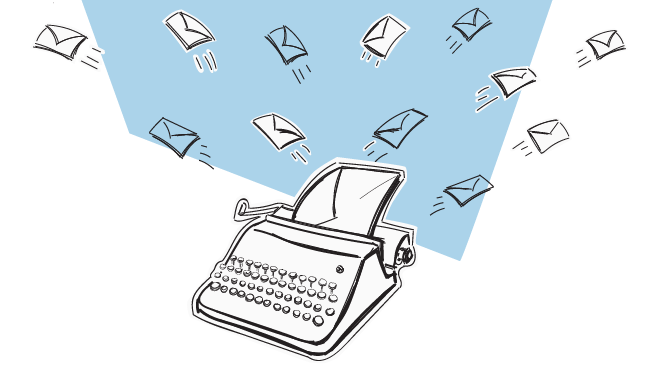SEO is changing, social media network trends change every month, and paid ads are getting more expensive, but one thing remains constant – email marketing. If you want consistently good marketing results, email is one of your safest bets. And with cold email, you can earn revenue from people who have not even heard about you yet.
But many people mistake poorly crafted emails to random audiences for a good cold email campaign. To do it right, you need to approach cold email strategically, and today, we’re going to help you do just that.
What does “cold” mean in cold email?
A cold email is an email you’re sending to someone who has not previously engaged with your business. They don’t know about you or your product and have not explicitly expressed interest to start talking with your brand.

Much like talking to someone you first met, a cold email is your chance to get your foot through the door. The reason why some cold email campaigns fail is that the sender would rather get their entire body through the door and make the sale immediately.
How to create a successful cold email campaign
In theory, creating cold email campaigns is a breeze. You grab some cold email software, write a cold email that mentions a certain pain point and blast this to an email audience. But it takes a lot more than that to succeed. Today, we’re going to show you how to send and write cold emails with success.
Step 1: define the goal you want to achieve
The beginning step is to determine the ultimate goal of your cold emails. Once you have your goal, you’ll have an easier time choosing your ideal audience, the subject line, the call to action and more.
The goal will depend on your business and what you’re selling, and we’ll get into that in a second. First order of business is – choose one goal per cold email campaign. Your audience only has a few seconds per email, so don’t splinter their attention in multiple directions.

Some examples of goals can include:
- an agency reaching out with a personalized message for link building
- selling a new product in a developed category to an existing audience
- a consultant booking more meetings with a potential target audience
- an employer sending a personalized cold email asking for a new hire
With a clear goal, you can write better cold email subject lines, pick a good cold email template, have clearer messaging and eventually, better results.
Step 2: identify your audience
When you know th goal of your cold emailing campaign, determining the audience is a piece of cake. It’s also necessary, because in order for your cold emails to drive results, you need to properly research your target audience. Find out what their pain point is, what they read and consume, how they communicate and what they expect.
For example, you’re an agency reaching out to prospects and you’re asking for links in your cold emails. You’re typically going to look for editors, heads of content, webmasters and more senior marketing managers in companies that have great websites worth getting a link from.
The size of the target audience matters, too – it should be narrow enough when you pinpoint people whose needs you can realistically solve.
Step 3: write amazing cold email subject lines
Subject lines in emails are the breaking point for your target audience. 64% of recipients decide whether to delete or open your cold email based on the subject line. Whether you want to reach out with your first cold email or do some follow up, subject lines deserve special attention.
Take a look at these two subject line examples:
Book a free meeting to get more sales!
Hey firstname, get more conversions from paid traffic
They may seem similar from a distance, but the second subject line is bound to perform better. It’s personalized and it attacks a pain point for a specific target audience.
The general rules for writing a subject line apply, such as how long it should be and what characters (not) to include. But the most important point with cold emailing is to make them short, personalized and attack a specific pain point.
Step 4: make your opening memorable
If someone opened your cold email based on the subject line, you’re off to a great start. But still, it’s just a start and you want to maintain that attention. According to Litmus, the average person spends just about 9 seconds reading an email, so you want to capitalize on that.
If we take the example of a cold email from our previous step, this is how the intro would go:
Hey firstname,
Is your paid traffic cost increasing but you’re not getting a good return on ad spend? You’re not alone – other industry experts say the same. But we have a playbook you need to see – to get amazing ROAS again.
It’s short, reads well and addresses the pain point that the reader has. Don’t use generic openers and complex greetings. Hit them head on with something that will make them read through the end.
Step 5: introduce yourself and who you are
Now that your cold email has their interest, you want to show some social proof. Why are you the right person to talk about this pain point of theirs. You don’t have a lot of time and space to flaunt with your awards and accomplishments so keep it short and to the point.
In the case of the cold email we started, this would be a good addition to the opening:
We’re a paid ads agency from place and we help brands like yours in industry get more out of their paid campaigns. On average, our clients see a 40% increase in ROAS after working with us.
Many cold emails fall flat because the person sending fails to introduce themselves properly in the email body. You don’t have the length of a blog post to present your achievements, so pick the most relevant one for the target audience.
And if you want to include more details, you can do that in the follow up email.
Step 6: show that you deeply understand their pain points
The essence of cold emailing once more – showing potential customers that you’ve dealt with the same problem and solved them before. Think about what keeps them up at night and where your business could be of help the most.
Pro tip: the typical cold email template will not have these details written out for you. You have to do your own research and find out what it is that would make your prospect grab their credit card.
In the case of our example, something like this would work:
We just worked with client that spent $50,000 per month, with ROAS declining month over month. After just one strategy session, they were able to improve their ROAS by 30%. We want to help you do the same.
This part of cold emails is arguably the most difficult because you need prior experience with someone who has that pain point so you know how to frame your offer. So, before doing any cold emailing, make sure you have a great track record solving problems for your existing customers.
Step 7: add your offer
If you’ve done everything right so far and piqued their interest with a catchy subject line and great social proof, you should now be well on your way to their wallets and hearts. They know what you to from the beginning of your engaging cold email, now it is the time to make an offer to do the same for them.
This is what it may look like for the cold email we’ve been writing in this article:
We’d like to analyze your current paid ads strategy, completely free. We’ll sit down together and for 30 minutes, find out why it’s not giving you the results you want.
You don’t immediately have to get them to purchase consulting services, a product or something else. Just getting them on a call is already a huge win for your cold emaling efforts.
Step 8: finish off with a strong call to action
Every good cold email template ends with a strong call to action. It’s comprised of just a few words, explaining the reader exactly what they need to do after reading the email. In our example, it would be this:
Book your free call today
And that’s it. Remember, the call to action should align with the offer you’ve made in the previous step of your cold email. You don’t want to offer a free trial and then have the CTA ask them to book a free demo.
Examples of good calls to action include:
- Book a free demo
- Grab your free trial
- Start today for free
- Talk to an expert
- Download your ebook for free
- Sign up for a free plan
(Optional) Step 9: follow up email
As any cold emailing expert will tell you, just sending one cold email and hoping it sticks is not an efficient strategy. Most people who send and write cold emails send out at least three to four follow up emails after their first message.
The good news? You can automate so much of this work with good cold email software like Woodpecker. The bad news? It takes time to understand how many times to follow up and at which time intervals.
In general, follow up cold emails are easier and shorter to write because you already broke the ice with your initial message. And just like you can grab a cold email template, you can do the same with a follow up email series too.
And your cold email is finished
If this sounds easy, that’s because it only sounds that way. Cold emailing can bring many rewards, but that’s only when you figure out all the variables, fine-tune your target audience and their needs and have a crazy good offer they can’t refuse. And unfortunately, we can’t help with all of that.
But we can offer you a cold emailing platform that is going to make it easy to create, segment, personalize, schedule and automate your cold emails so that you have the highest chances of success.
Grab your free trial of Woodpecker today!

